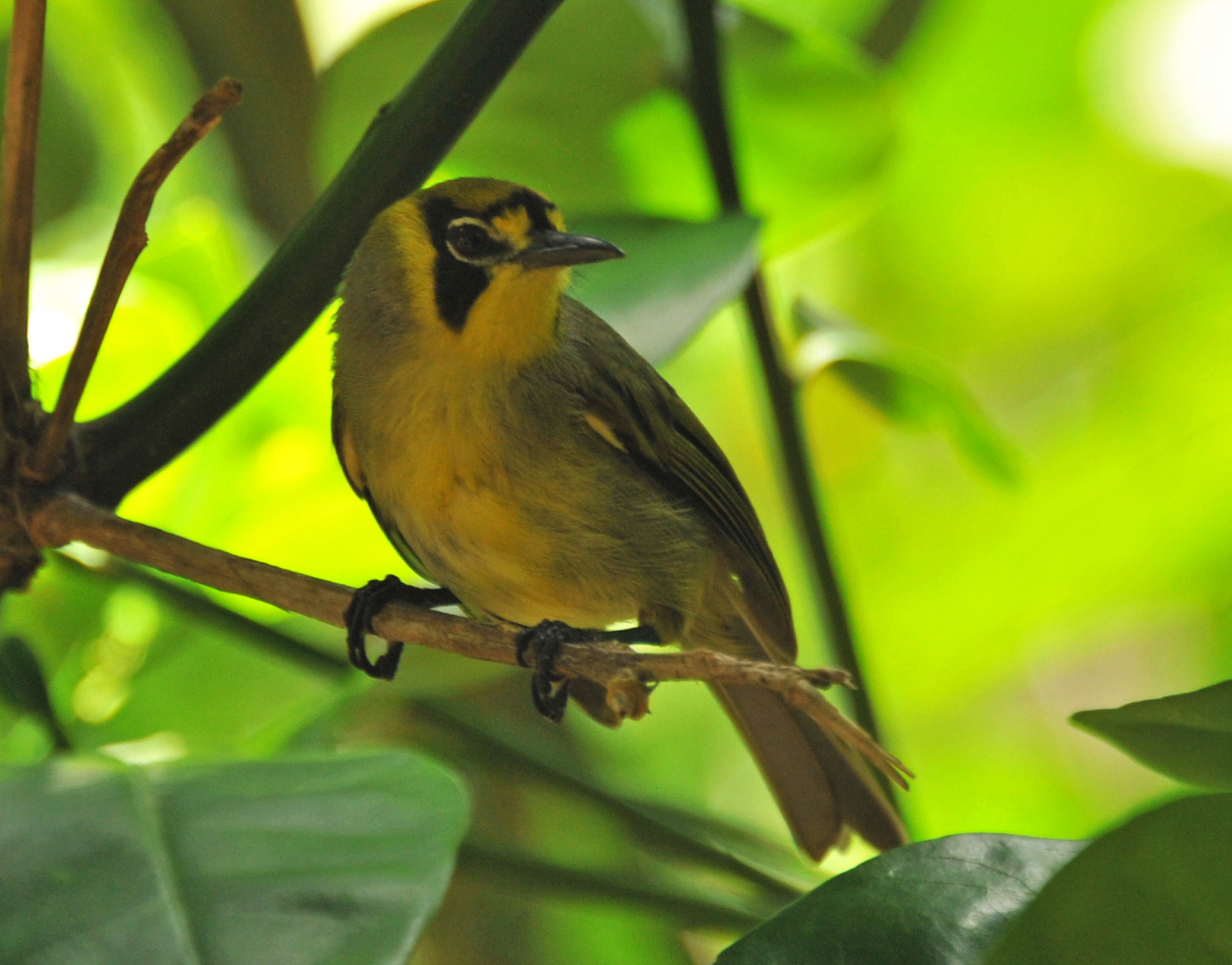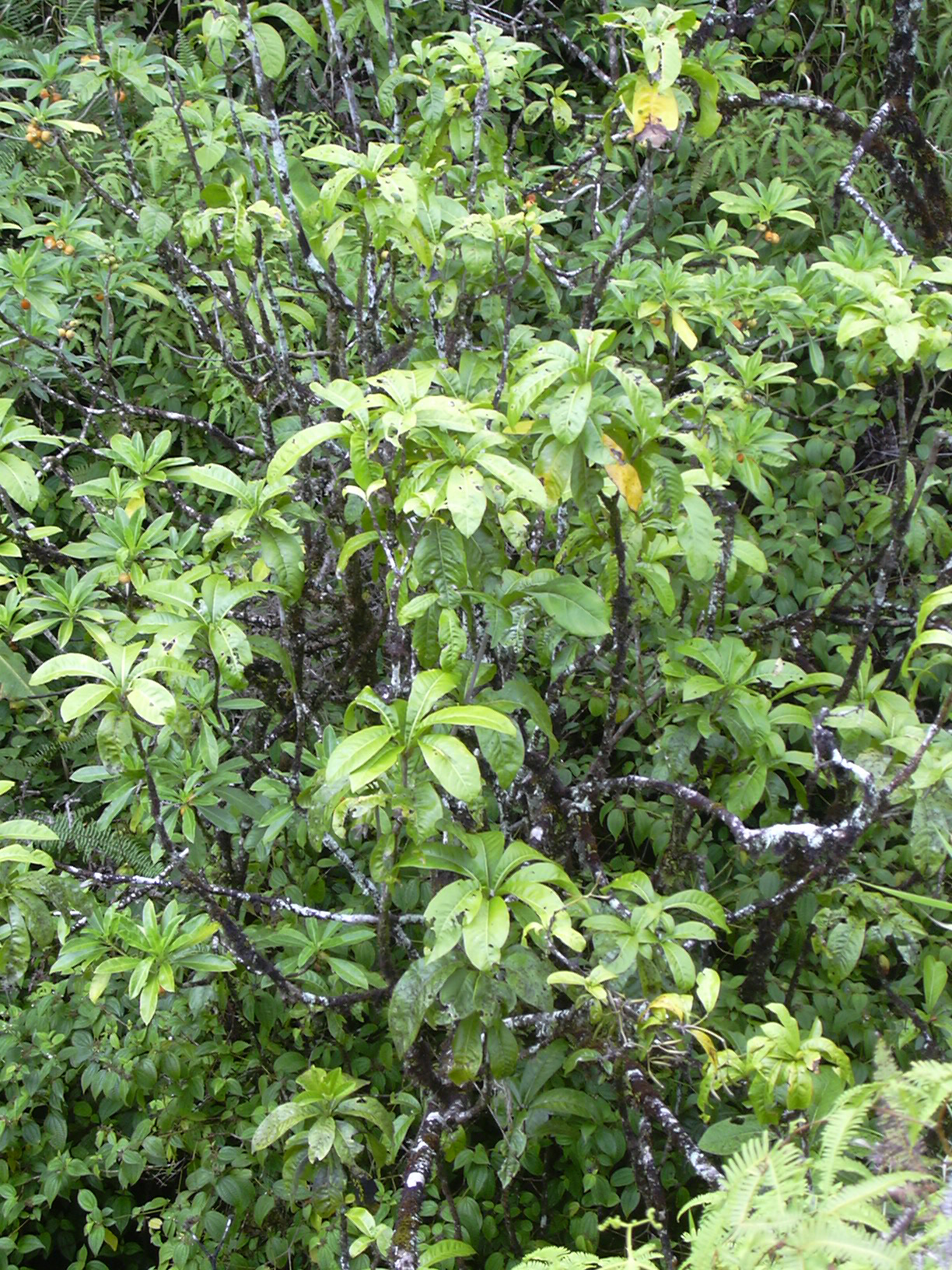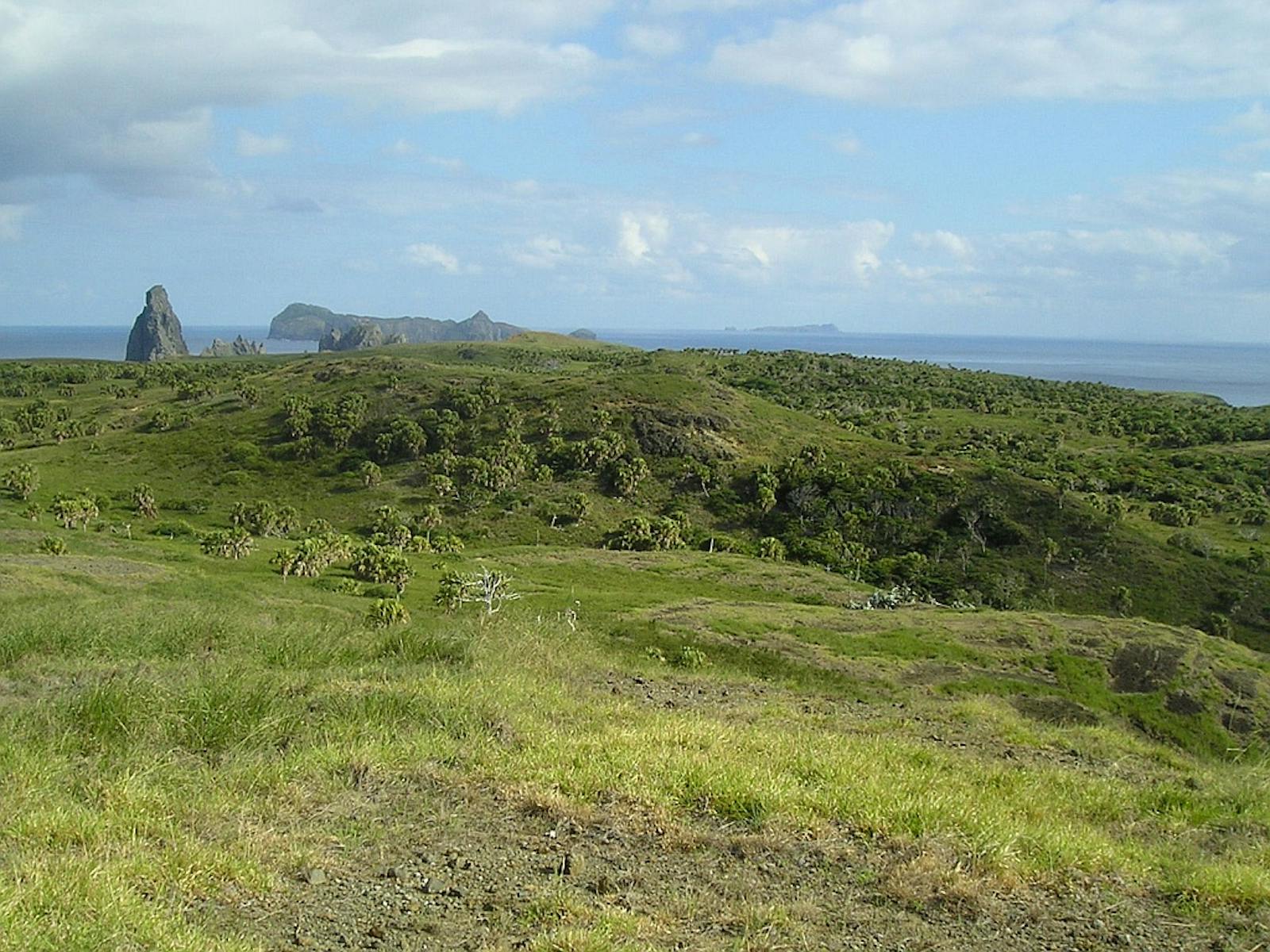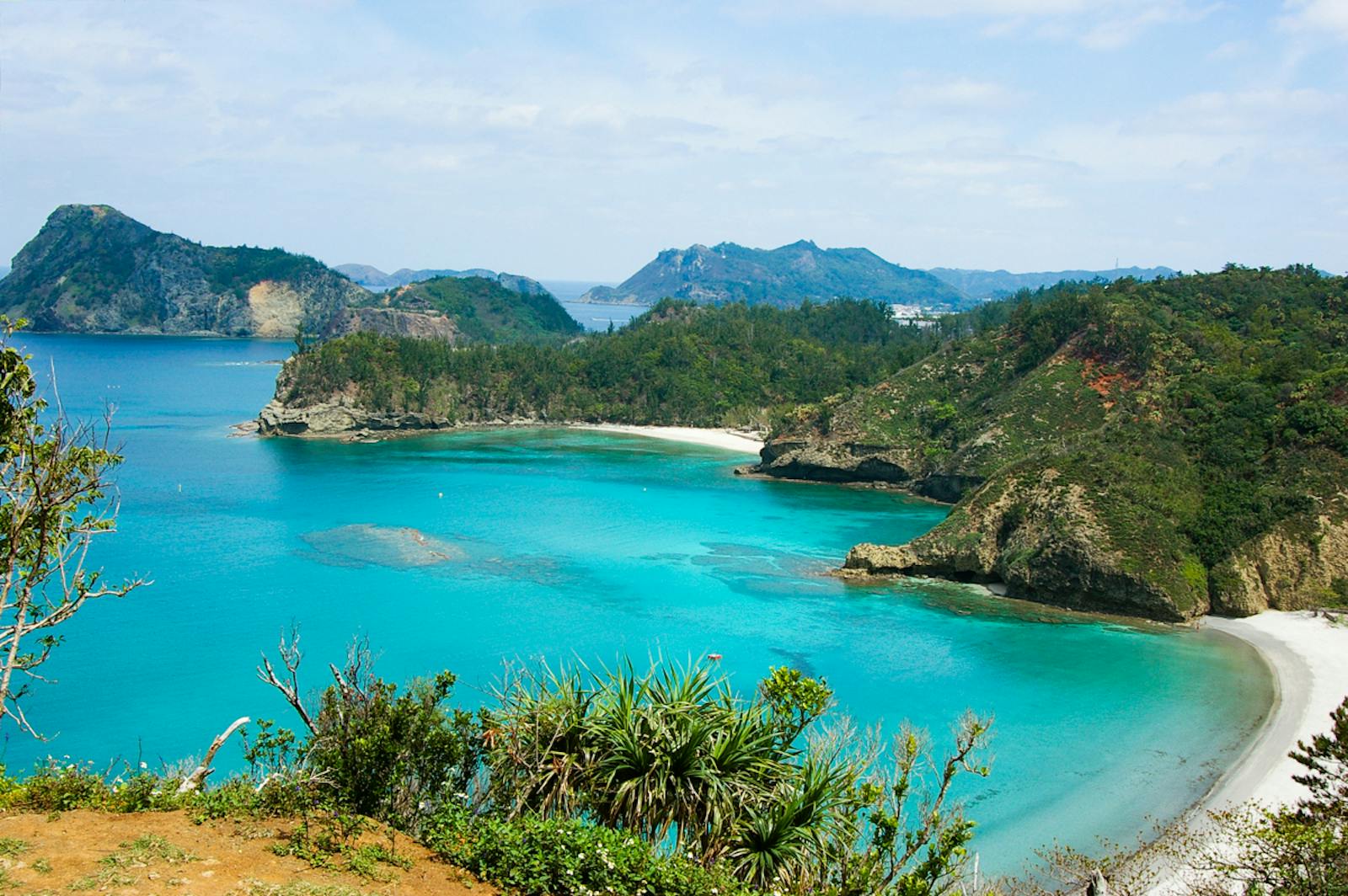Ogasawara Subtropical Moist Forests
The ecoregion’s land area is provided in units of 1,000 hectares. The conservation target is the Global Safety Net (GSN1) area for the given ecoregion. The protection level indicates the percentage of the GSN goal that is currently protected on a scale of 0-10. N/A means data is not available at this time.
Bioregion: Ogasawara Subtropical Islands (OC10)
Realm: Oceania
Ecoregion Size (1000 ha):
10
Ecoregion ID:
626
Conservation Target:
82%
Protection Level:
10
States: Japan
The Ogawasara (or Bonin) and Iwo (or Volcano) Islands are a widely scattered archipelago of 20 major volcanic islands once covered in subtropical moist and dry forests. They are far from Japan, the Nansei Shoto Islands, and the Marianas and this isolation has led to the evolution of many distinct species, including the handsome Bonin white-eye with its black and yellow striped face. Fifty-six percent of the 441 native plant species are found nowhere else (161 of vascular plants and 88 of woody plants), and 75% of the trees (73 of 79 species) are considered endemic.

The flagship species of the Ogasawara Subtropical Moist Forests ecoregion is the Bonin white-eye. Image credit: Creative Commons
The Ogasawaras occur in three main clusters of islands: the Mukojima, Chichijima, and Hahajima-rettos groups. The largest, Chichijima, has an area of 24 km2 and its highest point is 317 m in elevation. The climate is subtropical with a drier periods from January to March and from July to August. The rugged terrain supports several distinct types of forest, including Elaeocarpus-Ardisia mesic forest in the lowlands where deep soils occur and Distylium-Raphiolepis-Shima dry forest of drier lowland and upland sites.
A variety of these forests is Distylium-Schima dry forest that is found in cloudy uplands. Pandanus boninensis and Syzgium buxifolium are common elements. These forests are notable for high levels of plant endemism with many rare species. Raphiolepsis-Livistona dry forests occur on dry, rocky slopes with Bonin fan palm, Pandanus boninensis, and Ochrosia nakaiana as dominant species. Distylium-Pouteria scrub forest is limited to mountain ridges and exposed, eroded tops of sea cliffs. Myrsine okabeana, Symplocos kawakamii, and Pittosporum parvifolium are characteristic of these species-rich scrub forests.

Pisonia umbellifera. Image credit: Creative Commons
There are two endemic plant genera, Dendrocacalia (Asteraceae) and Boninia (Rutaceae). Some of the unique plant species may be relict endemics that evolved in moister conditions when the islands were higher with more abundant rain and fog. Metrosideros boninsis is from an ancient Gondwanaland lineage common in the southern Pacific, but how it arrived in the Ogaswaras remains uncertain. The Bonin flying fox is unique to the islands, as well as a smaller Pipistrellus vesper bat that is now extinct.
The islands have 195 recorded species of birds, with the Japanese wood-pigeon and the Bonin white-eye being distinct to the islands. Three other unique birds went extinct, including another wood pigeon, Zoothera thrush, and the massively-billed Bonin grosbeak. Of the two land reptiles, the Ogasawara snake-eyed skink is endemic. The islands support 1,380 native insect species with 379 endemic, 134 lands snails with 100 endemic, and 40 species of freshwater fish. Cicindela bonina is an endemic tiger beetle.

Pouteria obovata. Image credit: Peter Woodard, Creative Commons
The archipelago has been disturbed by people for at least two centuries. The native forest has largely been lost in the northern islands through grazing by introduced goats. Only degraded, remnant patches of native forest in ravines remain here. The larger islands still retain some larger blocks of primary native forests that generally occur in more remote and steeper terrain.
Secondary forests cover extensive areas and some formerly cleared areas now support thick stands the invasive small tree Leucaena leucocephala. Extensive pine forests are present though these are believed to be originally planted by people. Feral goats, feral pigs, feral cats, and introduced black rats degrade and destroy native habitats and threaten native species. Leuceana, Casuarina, Ficus microcarpus, pines, and non-native bamboos are major invasive plants that take over habitat and inhibit native forest regeneration. Large areas of multiple islands are formally protected within the Ogasawara National Park, including many of the remaining native forest.
The priority conservation actions for the next decade are to: 1) continue black rat and feral cat eradication efforts on the larger islands and several smaller islands that are key nesting sites for Laysan and black-footed albatross; 2) continue with major invasive plant control and eradication on Mukojima Group, Hahajima Group, Nakodojima, and Mukohjima; and 3) emphasize protection and restoration of sclerophyllous scrub (eastern part of Chichijima and on Anijima) and subtropical rainforest (Sekimon region of Hahajima) as these harbour populations of many endemic species.
Citations
Mueller-Dombois D, FR Fosberg. 1998. Vegetation of the Tropical Pacific Islands. Springer-Verlag, New York.
Zicus S. 2018. Ogasawara subtropical moist forests. Accessed 1 June 2018 at https://www.worldwildlife.org/ecoregions/oc0109
Kanto Regional Forest Office. 2010. Ogasawara Ecosystem Conservation Action Plan. Kanto Regional Environment Office of Japan, Ogasawara Village, Japan.




